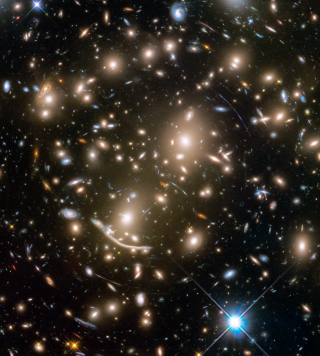Mancera Piña, Pavel E.; Aguerri, J. A. L.; Peletier, Reynier F.; Venhola, Aku; Trager, Scott; Choque Challapa, Nelvy
Referencia bibliográfica
Monthly Notices of the Royal Astronomical Society, Volume 485, Issue 1, p.1036-1052
Fecha de publicación:
5
2019
Número de citas
71
Número de citas referidas
66
Descripción
We study the population of ultra-diffuse galaxies (UDGs) in a set of
eight nearby (z < 0.035) galaxy clusters, from the Kapteyn IAC WEAVE
INT Clusters Survey. We report the discovery of 442 UDG candidates in
our eight field of views, with 247 of these galaxies lying at projected
distances <1R200 from their host cluster. With the aim of
testing theories about their formation, we study the scaling relations
of UDGs comparing with different types of galaxies, finding that in the
full parameter space they behave as dwarf galaxies and their colours do
not seem to correlate with their effective radii. To investigate the
influence of the environment on the evolution of UDGs, we analyse their
structural properties as functions of the projected clustercentric
distance and the mass of their host cluster. We find no systematic
trends for the stellar mass nor effective radius as function of the
projected distance. However, the fraction of blue UDGs seem to be lower
towards the centre of clusters, and UDGs in the inner and outer regions
of clusters have different Sérsic index and axial ratio
distributions. Specifically, the axial ratio distributions of the outer
and inner UDGs resemble the axial ratio distributions of, respectively,
late-type dwarfs and dwarf ellipticals in the Fornax Cluster suggesting
an environmentally driven evolution and another link between UDGs and
dwarf galaxies. In general our results suggest strong similarities
between UDGs and smaller dwarf galaxies in their structural parameters
and their transformation within clusters.
Proyectos relacionados

Evolución de Galaxias en Cúmulos
Las estructuras en el Universo, a todas las escalas de masa, se han formado de una forma jerárquica y principalmente producidas por fusiones de galaxias. Sin embargo, esta formación jerárquica de las galaxias está modulada por el entorno en el cual se crean y evolucionan. Mientras que las galaxias de campo presentan una evolución pasiva, los
Jairo
Méndez Abreu